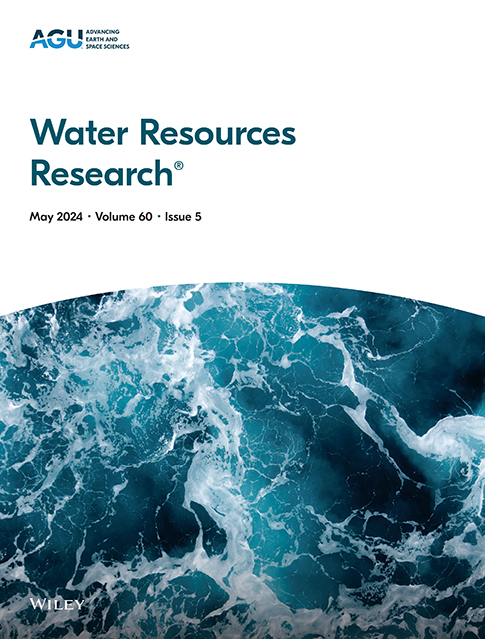灌溉和筑坝长江水文的变化:溪流、极端情况和湖泊水动力学
IF 4.6
1区 地球科学
Q2 ENVIRONMENTAL SCIENCES
引用次数: 0
摘要
长江流域经历了大坝运行、灌溉和取水,了解人为活动在水文循环中的作用对于支持长江流域的可持续水资源管理至关重要。然而,由于现有的基于过程的模型精度不够,无法将人为活动作为水文循环的一部分进行全面描述,因此这仍具有挑战性。为此,本研究对国家尺度陆面-水文-水动力耦合模型(CLHMS)进行了改进,增加了针对不同作物的动态灌溉方案、包含蓄水异常和需水异常的扩展水库运行方案,以及基于成本函数的方法,将需水与水库运行联系起来。增强型模型通过与历史流量、90 座水库的蓄水量、长江中下游灌溉取水量以及鄱阳湖水位和蓄水量的对比进行了广泛验证。通过在长江流域建立对照实验,我们发现灌溉和取水导致河水流量减少 2%-6%,水库运行导致河水流量的季节性减弱。在流域尺度上,在人类活动的作用下,特大洪峰的增加趋势出现了逆转,灌溉和取水的洪水减缓效应占到水库运行效应的 50%。鄱阳湖的水动力也表现出相当大的人为改变,汛期结束时水位下降了 1.79 米。我们的研究揭示了在流域尺度上量化人为水文影响的方法,对理解人类活动与水文循环之间的共同演化具有重要意义。本文章由计算机程序翻译,如有差异,请以英文原文为准。
The Changing Hydrology of an Irrigated and Dammed Yangtze River: Streamflow, Extremes, and Lake Hydrodynamics
Understanding the role of anthropogenic activities in the hydrological cycle is critical to support sustainable water management for the Yangtze River Basin (YRB), which experiences extensive dam operation, irrigation and water withdrawal. However, this remains challenging due to insufficient accuracies of existing process-based models for fully depicting anthropogenic activities as part of the hydrological cycle. To this end, this study enhances a national-scale coupled land surface-hydrologic-hydrodynamic model (CLHMS) with a dynamic irrigation scheme for distinct crops, an extended reservoir operation scheme incorporating both water storage anomalies and water demand anomalies, and a cost-function-based approach to link water demands with reservoir operation. The enhanced model is extensively validated against historical streamflow, water storage of 90 reservoirs, and irrigation water withdrawal in the YRB, and the water level and storage of the Poyang Lake (PYL). By setting up controlled experiments in the YRB, we show that the streamflow decreases by 2%–6% due to irrigation and water withdrawal, and manifests an attenuated seasonality due to reservoir operation. At the basin scale, the increasing trend of extreme flood peaks exhibits a reversal under human activities, with the flood mitigation effect of irrigation and water withdrawal accounting for up to 50% of that of reservoir operation. The hydrodynamics of the PYL also exhibits considerable human-induced alterations, with a 1.79 m-decrease in the water level at the end of flood season. Our study sheds light on quantifying anthropogenic hydrologic impacts at basin scales, with important implications for understanding the co-evolution between anthropogenic activities and the hydrological cycle.
求助全文
通过发布文献求助,成功后即可免费获取论文全文。
去求助
来源期刊

Water Resources Research
环境科学-湖沼学
CiteScore
8.80
自引率
13.00%
发文量
599
审稿时长
3.5 months
期刊介绍:
Water Resources Research (WRR) is an interdisciplinary journal that focuses on hydrology and water resources. It publishes original research in the natural and social sciences of water. It emphasizes the role of water in the Earth system, including physical, chemical, biological, and ecological processes in water resources research and management, including social, policy, and public health implications. It encompasses observational, experimental, theoretical, analytical, numerical, and data-driven approaches that advance the science of water and its management. Submissions are evaluated for their novelty, accuracy, significance, and broader implications of the findings.
 求助内容:
求助内容: 应助结果提醒方式:
应助结果提醒方式:


